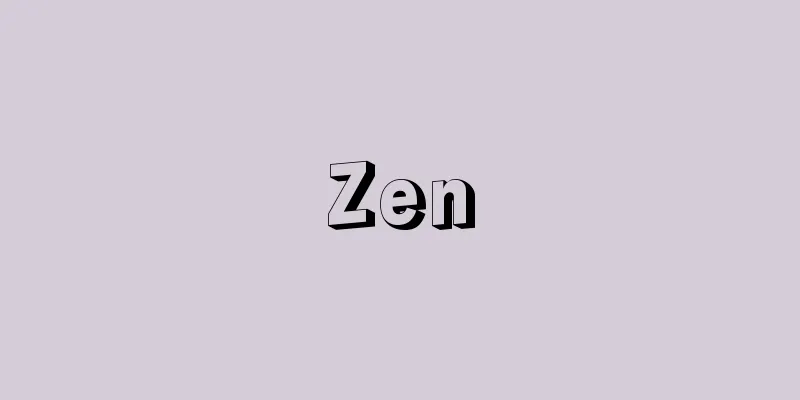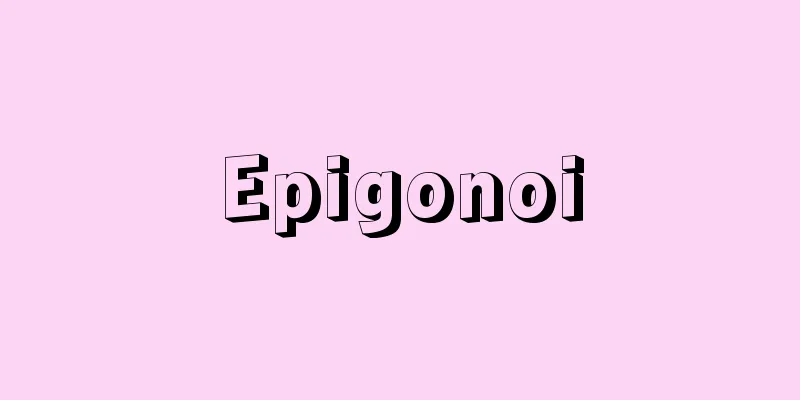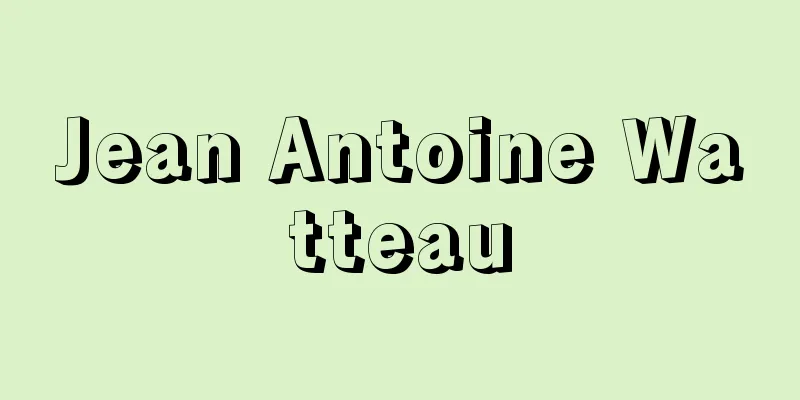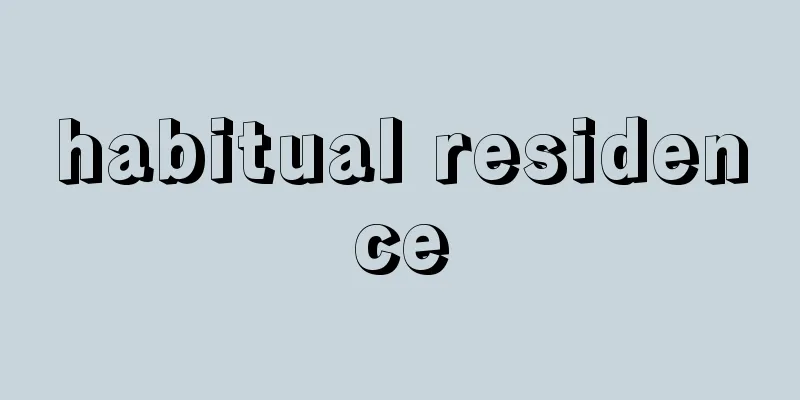Senegal - Republic of Senegal (English spelling)

|
Senegal is a country located at the western end of West Africa. Its official name is the Republic of Senegal. Cape Verde, located on the west outskirts of the capital Dakar, is known as the westernmost point of the African continent. The shape of the country resembles the profile of a lion glaring at the Atlantic Ocean, with Gambia, which formed the Senegambia Federation with Senegal in 1982, at its mouth. It borders Mauritania to the north across the Senegal River, Mali to the east, and Guinea-Bissau and Guinea to the south. During the slave trade era, Gorée Island off the coast of Dakar was known as a base for the slave trade, and Dakar was the center of colonial administration in West Africa during the French colonial period. L.S. Senghor, a poet and first president, held the position for 21 long years from independence in 1960 until his retirement in 1980, and pursued pro-Western policies. The monoculture economy of the colonial era continues to this day, with peanuts and phosphate rock being the main exports. The country has an area of 196,722 square kilometers, about half the size of Japan, and a population of 11 million (2006 estimate), 12.534 million (2009 estimate). The capital, Dakar, has a population of 2.6 million (2007 estimate). [Hiroshi Fujii] NatureThe Senegambian lowlands, which occupy most of the country, are characterized by their low undulations and extremely flat land, with most of the land being plains with an elevation of less than 200 meters. The only mountainous areas that exceed 200 meters are the Niokolo-Koba National Park in the southeast and the surrounding area, which is formed by the northern end of the Fouta Djallon Mountains in Guinea. The three major rivers, the Senegal River, the Gambia River, and the Casamance River, which flow west through the plains and empty into the Atlantic Ocean, play a major role in agriculture and transportation. The largest of these, the Senegal River, originates in the Fouta Djallon Mountains and rises in the rainy season, causing flooding downstream. Wind-driven sand dunes can be seen on the coast and inland from its mouth at Saint-Louis to Cape Verde. The climate is a steppe climate with little rainfall in the north, which is connected to the Sahara Desert, while the central and southern parts have a savanna climate with a rainy season (July to October) and a dry season (October to June). The annual rainfall is about 500 mm in the north and 1,800 mm in the south, and irrigation is necessary in the north and central parts during the dry season. The temperature is high all year round, but there is a significant temperature difference between the coast and inland. The Canary Current (a cold current) flows south, so the northern coast is cool in winter, dropping to 13°C. The inland area is hot in summer, with temperatures reaching over 40°C. In winter, the area is hit by a dry wind mixed with sand called harmattan that blows out from the Sahara Desert. Giant baobab trees, which are resistant to dryness, can be seen in many places in the northern part of the country, where there is little rainfall, while coconut palms and tropical forests are widespread in the hot and humid southern part. [Hiroshi Fujii] historyIn the Middle Ages, the area of present-day Senegal was under the control of the Almoravid Kingdom and the Mali Empire, and later the Wolof state (14th century) and the Fulbe Kingdom (15th century) flourished. In the early modern period, Europeans arrived and engaged in trade and slave trade, eventually becoming colonies. Portugal entered the area first in 1444, followed by France, the Netherlands, and Britain in the 16th century. France, among them, began trading at the mouth of the Senegal River, and in the mid-17th century built a fortress on Saint-Louis Island at the mouth of the river and used it as its base. Saint-Louis developed as a city in the 17th and 18th centuries and became a trading center. The Senegal region was the subject of a struggle between Britain and France, and between the French Revolution and 1815, Saint-Louis fell to the British. Later, under Governor Faidherbe, France expanded its colonies to the interior, opening the port of Dakar and promoting the cultivation and export of groundnuts. Inland, Islamic kingdoms resisted French invasions, but by the end of the 19th century the entire region was incorporated into the colony, and together with other territories, it formed French West Africa. In 1902, Dakar replaced Saint-Louis as the capital of French West Africa, and developed as the administrative and economic center. Although only a select few were granted citizenship, many Africans were conscripted and sent to the European front during the First and Second World Wars. After World War II, the independence movement gained momentum, centered around Senghor, and in 1958 it became an autonomous republic, and in June 1960, during the "Year of Africa," it formed the "Federation of Mali" with present-day Mali. However, due to conflicts between the interests of the two countries and the ideas of their leaders, Senegal left the Federation of Mali two months later in August, and became independent as a separate country. [Hiroshi Fujii] PoliticsThe political system is a constitutional republic, and the president is directly elected. After independence, Senghor held the position of president until 1980, when he resigned due to old age and Vice President Abdou Diouf became the second president. Diouf won the presidential elections in 1983, 1988, and 1993, and was elected three times. However, in the 2000 presidential election, Abdoulaye Wade, leader of the Senegalese Democratic Party (PDS), defeated Diouf and became president, resulting in a peaceful transfer of power. Wade was re-elected in the presidential election in February 2007. The country has a pro-French and pro-Western foreign policy. An independence movement has been taking place in the southern Casamance region since the 1980s. The parliament is a unicameral National Assembly, with 120 members elected by popular suffrage. For a long time, Senegal was dominated by a single party, the Union for Progress (UPS), but in 1976 it became a multi-party system, and by 1984 there were 15 parties. In the 1993 general election, six parties won 120 seats, with the Senegalese Socialist Party, the successor to the UPS, becoming the largest party. In the 2001 National Assembly election, a coalition led by the PDS won 89 of the 120 seats. In June 2007, the number of seats in the National Assembly was expanded to 250, and the coalition "Change", centered on the ruling PDS party, won a landslide victory, winning 131 seats. The country has 10 regions, which are further divided into prefectures, districts, cities, and villages. The heads of the regions, prefectures, and districts are appointed, while the rest are elected by the parliament. Each municipality, except for the regions, has its own parliament. The judicial system is modeled after that of France. Since independence, there had been discussions about merging with Gambia, which was a British colony, but momentum for this increased following a coup in Gambia in July 1981, and the "Senegambian Federation" was established in February 1982, but was dissolved in 1989. There are three military services, an army, a navy and an air force, with 11,900 personnel in the army, 950 in the navy and 770 in the air force. A joint defense agreement was concluded with France, and 840 French troops are stationed there. [Hiroshi Fujii] Economy and IndustryDuring the colonial period, the Senegal region was the economic center of French West Africa, but as the constituent countries gained independence piece by piece, the market shrank, and the region lagged behind in industrialization and diversification of commercial crops, with a low gross national income (GNI) per capita of $830 (2007). Economic ties with France remain strong, and trade with the region accounts for a large proportion of both exports and imports. The top export destination is Mali (24.0%), followed by France (9.5%). Agricultural workers account for 33% of the employed population. Groundnuts, the first commercial crop, were introduced in 1834 as a crop suitable for arid regions, and are exported as a raw material for soap manufacturing. Production volume was 1.48 million tons during the bumper harvest of 1975, accounting for 7.5% of world production (fourth largest in the world), but fell to 500,000 tons in 1980 due to drought, and has been extremely unstable, recovering to 630,000 tons in 1993, and dropping to 330,000 tons in 2007. Cultivation is centered in the area along the railway line in the west, with about half of the total production in the Kaolak region. Most of the cultivation is by small farmers, but large plantations have recently appeared. Seasonal workers flow in from Guinea during the harvest season. Other commercial crops that are growing include cotton, sugarcane, and vegetables. The food crops cultivated for self-sufficiency include the traditional staples of foxtail millet and millet, rice, which has become a staple food in recent years, corn, cassava (a root crop native to South America. The roots are edible and are used to make tapioca), and bananas. Rice is cultivated on the Senegal River and downstream of the Casamance River. Self-sufficiency crops generally do not meet demand, so the country relies on imports. Livestock includes 3.18 million cattle, 9.48 million sheep and goats, 820,000 horses, 380,000 donkeys, and 4,600 camels. Notable for this is that many livestock are raised by farmers for farming, in addition to being raised by pastoralists in the north. There are good fishing grounds off the coast due to the Canary Current, and the annual catch is 420,000 tons of tuna, bonito, sea bream, shrimp, octopus, etc. Fish and shellfish are the top export (20.2% in 2007). The main fishing ports are Dakar and Saint-Louis, and freshwater fishing in the rivers is also thriving. The country's main industries are peanut oil, which is made from peanuts and phosphate ore, and fertilizer. Industrial cities include Dakar (oil refining, peanut oil, fertilizer, soap, paper, steel, plastics, ship repair, textiles, cement), Saint-Louis (food, textiles, chemicals), Caolac (peanut oil), Thiès (peanut oil, textiles, fertilizer), and Rufisque. As for resources, the country produces 1.8 million tons of phosphate ore per year (2007), with Taiba and Paro being the main producing areas. An iron ore mine with reserves of 980 million tons has been discovered in Faleme in the east, which is considered promising. Other raw materials produced include titanium, copper, natural gas, and limestone. The main export items are fish and shellfish, petroleum products, chemicals, cement, vegetable oil, etc., and the main export partners are Mali, France, India, Gambia, etc. The main import items are petroleum products, grains, crude oil, general machinery, etc., and the main import partners are France, Nigeria, the Netherlands, China, etc. The trade balance is chronically in a large excess of imports. There are four railway lines, including the Dakar-Saint-Louis line, the first in West Africa to be laid in 1885, and the international railway linking Dakar and Mali. Of the total road length of 14,500 km, 3,000 km are paved, and unpaved roads become difficult to pass during the rainy season. Rivers have also been important transportation routes since ancient times. Dakar is a transit point connecting Europe and the Americas, and both air and sea routes converge here. There are airports in 13 cities, and Dakar International Airport (Senghor International Airport) is served by flights from various countries. [Hiroshi Fujii] Society and CultureThe population density is 64 people per square kilometer (2009). The most densely populated areas are the western region, including the cities of Dakar, Thiès, Diourbel, and Caolac, and the lower Casamance River region. In recent years, the population has tended to move to urban areas. There has also been a large number of labor immigrants to France, reaching 60,000. The population growth rate is 2.6% (2000-2006), but the standard of medical care is low and the average life expectancy is 56.9 years for men and 60.2 years for women. The population is made up of about 20 ethnic groups, with the main tribes being the Wolof (43%), the Fulbe (also called Pool, 24%), and the Serer (15%), as well as the Toucouleur, Mandingo, and Dioula. The Wolof and Serer people live in the densely populated western region, the Toucouleurs in the Senegal River basin, the Fulbe (Pool) people in the north and upper Casamance River basin, the Mandingo in the south, and the Dioulanes in the lower Casamance River basin. Each tribe has its own traditional culture, which Senghor has worked to develop, but in urban areas French culture is also strongly influenced. The official language is French, and the national languages are Wolof, Fulbe, Serer, Dioulane, and Soninke, and each tribal language is used in daily life. French is used for school education. 94% of the population are Muslims (Muslims = followers of Islam), and mosques can be seen everywhere. 5% are Christian, and the rest practice traditional tribal religions. The education system is modeled after France, with six years of elementary school being compulsory, but the school attendance rate is 80% (2006). The highest educational institution is the University of Dakar. UNESCO World Heritage Sites include the cultural sites of "Gorée Island," "Ile Saint-Louis," "Senegambia Stone Circles," "Saloum Delta," and "Basari Region: Basari, Fula and Vedic Cultural Landscape," as well as the natural sites of "Niokolo Koba National Park" and "Djudgsi National Bird Sanctuary." (Niokolo Koba National Park was placed on the List of World Heritage in Danger in 2007 due to concerns about environmental deterioration due to poaching and dam construction plans.) [Hiroshi Fujii] Relations with JapanExports to Japan include seafood such as octopus, squid, abalone, scallops, and hairtail, while imports from Japan include automobiles, steel plates, machinery, and woven fabrics. Japan's economic and technical cooperation is largely related to the fisheries industry, and Japan Overseas Cooperation Volunteers are also dispatched. Japanese researchers of West Africa visit the Institute of Black Africa (IFAN) in Dakar at least once. [Hiroshi Fujii] Honjo Yasuhisa, Three Years in Senegal (1977, Jitsugyo no Nihon Sha) Senegal and Mauritania (1981), edited and published by the Japan External Trade Organization Agriculture and Forestry Association Senegal's Agriculture: Current Situation and Development Issues (1997, Japan Association for International Cooperation of Agriculture and Forestry) Ogawa Ryo, 60 Chapters to Understand Senegal and Cape Verde (2010, Akashi Shoten) [References] | | | | | | | | | | [Supplementary information] |"> Senegal flag ©Shogakukan Illustration/Shogakukan Creative "> Senegal location map Source: Shogakukan Encyclopedia Nipponica About Encyclopedia Nipponica Information | Legend |
|
西アフリカの西端にある国。正称はセネガル共和国République du Sénégal。首都ダカール西郊のベルデ岬はアフリカ大陸最西端の地として知られる。国土の形は大西洋をにらむライオンの横顔に似ており、口にあたるところに、1982年セネガルとともにセネガンビア連邦を結成したガンビアがある。北はセネガル川を境にモーリタニア、東はマリ、南はギニア・ビサウ、ギニアと国境を接している。奴隷貿易時代にはダカール沖合のゴレ島は奴隷貿易の根拠地として知られ、フランス植民地時代にはダカールは西アフリカ植民地行政の中心地であった。詩人で初代大統領のL・S・サンゴールは1960年の独立から1980年に勇退するまで21年間の長きにわたってその地位にあり、親西欧的政策をとってきた。植民地時代のモノカルチュア(単一作物生産)経済が現在も続き、ラッカセイと燐(りん)鉱石が主要輸出品である。面積は19万6722平方キロメートルで日本の約半分、人口は1100万(2006推計)、1253万4000(2009推計)。首都ダカールの人口は260万(2007推計)。 [藤井宏志] 自然国土の大部分を占めるセネガンビア低地は起伏が少なく、きわめて低平であることが特徴で、ほとんどが標高200メートル以下の平野である。200メートルを超す山地らしい山地は南東部のニオコロ・コバ国立公園とその周辺の山地のみで、ギニアのフータ・ジャロン山地の北端が入り込んだものである。平野を西流し大西洋に注ぐセネガル川、ガンビア川、カザマンス川の三大河川は農業や交通に大きな役割を果たしている。もっとも大きいセネガル川はフータ・ジャロン山地を水源とし、雨期に増水して下流で氾濫(はんらん)をおこす。河口のサン・ルイからベルデ岬にかけての海岸や内陸には風成砂丘がみられる。 気候は、北部がサハラ砂漠に続く雨の少ないステップ気候、中部と南部が雨期(7月~10月)と乾期(10月~6月)のあるサバンナ気候である。年降水量は北部で500ミリメートル、南部で1800ミリメートル程度であり、北部や中部では乾期には灌漑(かんがい)が必要である。年じゅう高温であるが海岸部と内陸部とではかなりの温度差がある。カナリア海流(寒流)が南下するため北部海岸では冬気温が13℃まで下がって涼しくなる。内陸部の夏は40℃以上になり暑い。冬季にはサハラ砂漠から吹き出すハルマッタンとよばれる砂まじりの乾いた風に襲われる。雨の少ない北部では乾燥に強い巨木バオバブが各地でみられ、高温湿潤な南部ではココヤシや熱帯樹林が広がっている。 [藤井宏志] 歴史現在のセネガルの領域は、中世にはアルモラビド王国、マリ帝国の支配下にあり、その後ウォロフ人の国家(14世紀)、フルベ人の王国(15世紀)が栄えた。近世にヨーロッパ人が来航して交易や奴隷貿易を行い、ついには植民地として領有されるに至った。まず1444年ポルトガルが進出し、16世紀にフランス、オランダ、イギリスが進出した。なかでもフランスはセネガル川河口で交易を始め、17世紀なかばには河口のサン・ルイ島に城塞(じょうさい)をつくり根拠地とした。サン・ルイは17~18世紀に都市として発展し、交易の中心地となった。セネガル地域はイギリスとフランスの争奪の対象となり、フランス革命から1815年までの間、サン・ルイがイギリスの手に落ちた。その後総督ファイドエルブのときフランスは内陸部にも植民地を広め、ダカール港を開港してラッカセイの栽培と輸出を進めた。内陸部でイスラム王国がフランスの侵攻に抵抗したが、19世紀末には全域が植民地に組み込まれ、他の領域とともにフランス領西アフリカを形成した。1902年サン・ルイにかわりダカールがフランス領西アフリカの首都となり、行政、経済の中心地として発展した。一部のものにしか市民権が与えられなかったにもかかわらず、第一次、第二次の世界大戦には多数のアフリカ人が徴兵されヨーロッパ戦線に送られた。第二次世界大戦後サンゴールを中心に独立運動が盛り上がり、1958年自治共和国となり、「アフリカの年」の1960年6月、現在のマリとともに「マリ連邦」を結成した。しかし、両国の利害や指導者の考え方が対立して、2か月後の8月にセネガルはマリ連邦を離脱、単独の国として独立した。 [藤井宏志] 政治政体は立憲共和制で、大統領は直接選挙で選ばれる。独立以後1980年までサンゴールが大統領の地位にあったが、高齢を理由に辞任し副大統領アブドゥ・ディウフAbdou Dioufが第2代大統領となった。ディウフは1983年、1988年、1993年の大統領選のいずれにも勝利し、三選を果たした。しかし、2000年の大統領選挙では、セネガル民主党(PDS)党首のアブドゥライ・ワッドAbdoulaye Wadeが、ディウフを破って当選し大統領に就任、政権の交代は平和裡(り)に行われた。2007年2月の大統領選挙でワッドが再選された。親フランス、親西欧の対外政策をとっている。1980年代から南部カザマンス地方で独立運動が起きている。議会は国民議会の一院制で、議員120名は普通選挙で選ばれる。政党は長らくセネガル進歩同盟(UPS)の一党独裁であったが、1976年に複数政党制となり、1984年には15の政党があった。1993年の総選挙では120議席を六つの政党が占め、UPSの後身のセネガル社会党が第一党となった。2001年の国民議会選挙ではPDS主導の連合が120議席のうち89議席を獲得した。2007年6月、議席数が250に拡大された国民議会選挙で与党PDSを中心とする連立勢力「変革」が圧勝、131議席を得た。全国に10州があり、さらに県、郡、市、村に分けられる。州、県、郡の首長は任命制、他は議会で選出する。州を除いた各自治体に議会がある。司法制度はフランスに倣っている。 独立以来、イギリスの植民地だったガンビアとの合併が検討されてきたが、1981年7月のガンビアにおけるクーデターを機に機運が高まり、1982年2月「セネガンビア連邦」を樹立したが、1989年破棄した。軍備は陸海空の3軍があり、陸軍1万1900人、海軍950人、空軍770人の兵員を有する。フランスと共同防衛協定を結び、フランス軍840人が駐留している。 [藤井宏志] 経済・産業植民地時代、セネガル地域はフランス領西アフリカの経済の中心地であったが、構成国がばらばらに独立したため市場が縮小し、工業化、商品作物の多角化にも遅れをとり、1人当り国民総所得(GNI)は830ドル(2007)と低い。フランスとの経済関係は依然として強く、貿易は輸出入とも多くを占めている。輸出相手国はマリ(24.0%)がトップで、フランス(9.5%)が第2位である。 農業従事者は就業人口の33%を占める。第一の商品作物であったラッカセイは、1834年乾燥地に適する作物として導入され、せっけん製造原料として輸出されている。生産高は1975年の豊作時には148万トンで世界生産の7.5%(世界第4位)を占めたが、1980年には干魃(かんばつ)で50万トンに落ち込み、1993年には63万トンに回復するなどきわめて不安定であり、2007年には33万トンに減少した。西部の鉄道沿線地域が栽培の中心で、カオラク地方で全体の約半分が生産される。小農による栽培が多いが、最近では大農園も出現している。収穫期にはギニアから季節労働者が流入する。ほかに商品作物として綿花、サトウキビ、野菜が伸びている。自給用の食料作物は、伝統的な主食であるアワ、キビ、近年主食となった米、トウモロコシ、キャッサバ(南米原産の根茎作物。根を食用とし、タピオカの原料となる)、バナナが栽培される。米はセネガル川、カザマンス川下流で栽培される。自給用作物は全般に需要に満たず輸入に頼っている。家畜は、ウシ318万頭、ヒツジ・ヤギ948万頭、ウマ82万頭、ロバ38万頭、ラクダ4600頭が飼育されている。北部の牧畜民による飼育だけでなく、農民の農耕用家畜も多いのが特徴である。沿岸にカナリア海流による好漁場をもち、マグロ、カツオ、タイ、エビ、タコなど年間42万トンの漁獲量がある。魚貝類が輸出額のトップ(20.2%。2007)である。主要漁港はダカール、サン・ルイで、河川での淡水漁業も盛んである。 工業は、特産のラッカセイと燐(りん)鉱石を加工するラッカセイ油、肥料などの工業が中心である。工業都市としてダカール(石油精製、ラッカセイ油、肥料、せっけん、製紙、製鉄、プラスチック、船舶修理、繊維、セメント)、サン・ルイ(食品、繊維、化学)、カオラク(ラッカセイ油)、ティエス(ラッカセイ油、繊維、肥料)、リュフィスクなどがある。資源は、燐鉱石を年180万トン(2007)産出し、タイバ、パロが主産地である。東部のファレメで埋蔵量9億8000万トンの鉄鉱山が発見され有望視されている。このほかチタン、銅、天然ガス、石灰石などが産出される。 主要輸出品目は魚貝類、石油製品、化学薬品、セメント、植物油などで、主要輸出相手国はマリ、フランス、インド、ガンビアなど。主要輸入品目は石油製品、穀物、原油、一般機械などで、主要輸入相手国はフランス、ナイジェリア、オランダ、中国などである。貿易収支は慢性的に大幅な輸入超過である。 鉄道は1885年西アフリカで最初に敷設されたダカール―サン・ルイ間をはじめ、ダカールとマリを結ぶ国際鉄道など4路線がある。道路は総延長1万4500キロメートルのうち3000キロメートルが舗装道路、未舗装道路は雨期に通過困難となる。河川も古くからの重要な交通路である。ダカールはヨーロッパとアメリカ大陸を結ぶ中継点にあり、航空路、海上航路ともに集中している。13の都市に空港があり、ダカール国際空港(サンゴール国際空港)は各国からの路線が乗り入れている。 [藤井宏志] 社会・文化人口密度は1平方キロメートル当り64人(2009)である。人口密度の高い地域は、ダカール、ティエス、ディウルベル、カオラクの諸都市のある西部地域とカザマンス川下流地域である。近年人口は都市部へ流入する傾向にある。またフランスへの労働移民も多く、6万人に達している。人口増加率は2.6%(2000~2006)であるが、医療水準が低く、平均余命も男56.9歳、女60.2歳である。国民は約20の民族集団から構成され、主要部族はウォロフ(43%)、フルベ(プールともよばれる、24%)、セレル(15%)のほかトゥクルール、マンディンゴ、ディウラである。ウォロフ人、セレル人は人口密度の高い西部地域に、トゥクルール人はセネガル川流域に、フルベ(プール)人は北部とカザマンス川上流域に、マンディンゴ人は南部に、ディウラ人はカザマンス川下流域にそれぞれ居住する。各部族はそれぞれ伝統的な文化をもち、サンゴールはその発展に努めたが、都市部ではフランス文化の影響も強い。公用語はフランス語、国語はウォロフ語、フルベ語、セレル語、ディウラ語、ソニンケ語であり、日常には各部族語が用いられる。学校教育にはフランス語を使用している。宗教はイスラム教徒(ムスリム=イスラーム信者)が94%を占め、至る所にモスクがみられる。キリスト教徒が5%、残りは伝統的な部族宗教である。教育制度はフランスに倣っており、小学校6年間が義務教育であるが、就学率は80%(2006)。最高学府はダカール大学である。 ユネスコ世界遺産には、文化遺産として「ゴレ島」「サン・ルイ島」「セネガンビアのストーン・サークル群」「サルーム・デルタ」「バサリ地方:バサリ族、フラ族、ベディック族の文化的景観」、自然遺産として「ニオコロ・コバ国立公園」「ジュッジ国立鳥類保護区」が登録されている(「ニオコロ・コバ国立公園」は、密猟やダム建設計画による環境悪化の懸念などから、2007年に危機遺産リスト入りしている)。 [藤井宏志] 日本との関係日本への輸出品としてタコ、イカ、アワビ、ホタテ、タチウオなどの魚貝類、日本からの輸入品として自動車、鋼板、機械、織布がある。日本の経済、技術協力は水産関係が多く、青年海外協力隊員も派遣している。日本の西アフリカ研究者は一度はダカールのブラック・アフリカ研究所(IFAN)を訪れる。 [藤井宏志] 『本城靖久著『セネガルの3年』(1977・実業之日本社)』▽『日本貿易振興会編・刊『セネガル・モーリタニア』(1981)』▽『勝俣誠編『セネガルの農業――現状と開発の課題』(1997・国際農林業協力協会)』▽『小川了編著『セネガルとカーボベルデを知るための60章』(2010・明石書店)』 [参照項目] | | | | | | | | | | [補完資料] |"> セネガルの国旗 ©Shogakukan 作図/小学館クリエイティブ"> セネガル位置図 出典 小学館 日本大百科全書(ニッポニカ)日本大百科全書(ニッポニカ)について 情報 | 凡例 |
<<: Senecio (English spelling)〈Latin〉Senecio
Recommend
Hachiman
[1] It is an abbreviation of "Hachimanjin&quo...
Wood tribute - Kinengu
...The name of cedar lumber from Shingu, the mout...
Aichi Watch Manufacturing Limited Partnership Company
…In 1981, Hattori Watch Shop (now Hattori Seiko) ...
Battle of Carchemish
…This expedition inevitably led to conflict with ...
Yan Shu (English spelling)
[Raw] Junka 2 (991) [Died] Zhihe 2 (1055). Politic...
Tiberius I(J)ulius Caesar Augustus
The second Roman Emperor (reigned 14-37). He was ...
Apsaras - Apsaras (English spelling)
A type of heavenly maiden, fairy, or water spirit...
Residual interest holder - Iryubunkensha
…If a spouse, lineal descendants, or lineal ascen...
Abkhaz people
...An autonomous republic (which has recently dec...
NC lathe - NC lathe
...There are also so-called Swiss-type automatic ...
Briolette of India
… [Ryu Shibusawa] [Famous Diamonds] There are man...
Iwakura Tomomi
A politician from the end of the Edo period to th...
washability curves
...The high-density liquid used in the test is ca...
Child soldier - Shounenhei
The mobilization of underage boys as soldiers was ...
Forgiveness - forgiveness
This refers to the arts and martial arts that are ...









